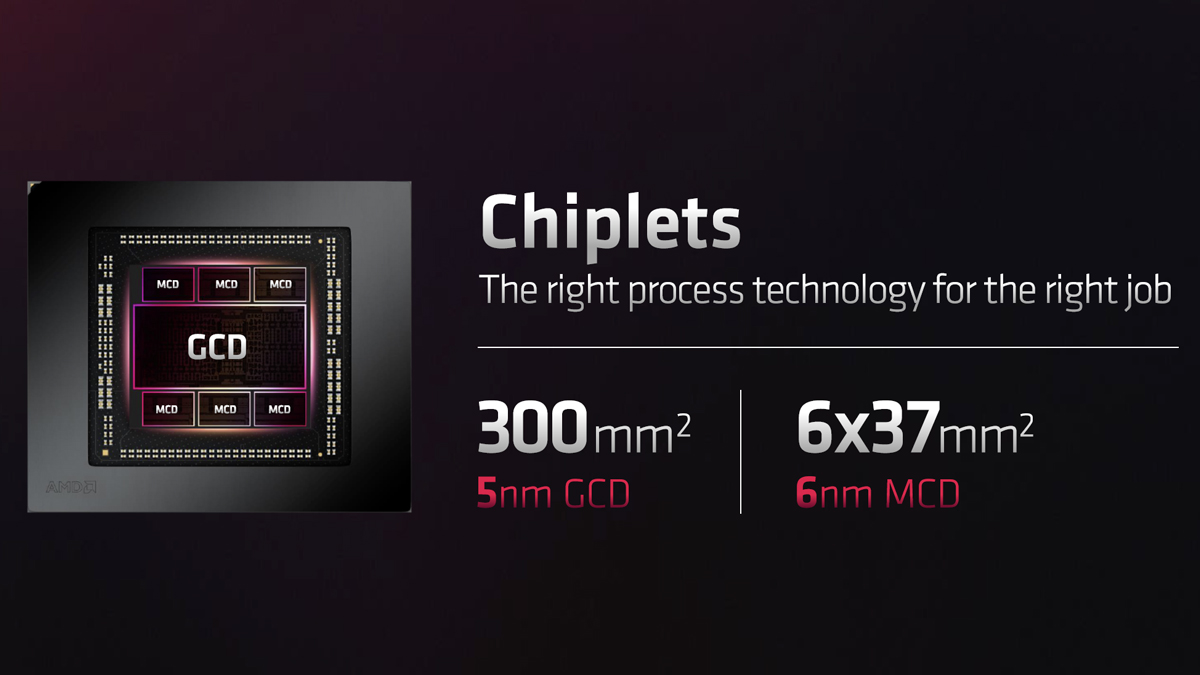AMD Looking Into RX 7900 Series Temperature Issues
AMD's reference designs have high hot spot temps
AMD's reference designs for its flagship RDNA 3 GPUs garnered early praise for being relatively sleek and for sensibly sticking with 2x 8-pin power connectors. But these Made By AMD (MBA) designs may suffer from thermal issues — at least, that's what German tech site HardwareLuxx is investigating, following a wake of reports that Radeon RX 7900 XT(X) cards are suffering from high-temperature hot spots, loud fans, and thermal throttling.
An AMD spokesperson confirmed that they're investigating the issues in a statement to HardwareLuxx: "Our GPU team is currently looking into the problem."
Using data from a handful of reviews as well as users from its forums, HardwareLuxx has shown that custom Radeon 7900 XT(X) designs appear to have a maximum delta of 20 degrees Celsius between the GPU's average temperature and high-temperature hot spots. This means that even if the GPU's temperature hits 80 C, the hot spot remains <100 C and the graphics card will not throttle.
However, MBA reference designs have been observed with GPU/hot spot temperature deltas as high as 53C (a 56C GPU with a 109C hot spot), and this seems to be a somewhat consistent issue. This means that a GPU with a modest average temperature of around 60C could start throttling if the hotspot reaches 110C.
If MBA designs are suffering from this large GPU-to-hot-spot delta and third-party designs aren't, it seems like the obvious culprit might be AMD's reference cooling designs. HardwareLuxx didn't jump to this conclusion, instead opting to discuss direct die cooling of the Navi 31 GPU being difficult due to the chiplet design presenting an uneven surface to the cooler. Specifically, editor Andreas Schilling said "we suspect that an uneven contact pressure is responsible for the high temperature differences."
Looking at a bare PCB, the publication says the central GCD and six MCDs are filled and look level, so there could be something else causing uneven contact issues (such as the GPU frame). In our testing, the reference-model Radeon RX 7900 XT(X) cards didn't seem particularly noisy, nor did they throttle or have any temperature issues (they reached a respectable maximum of 70C). However, it's certainly possible more strenuous workloads could result in higher temperatures — FurMark for example showed rather low GPU clocks in the 1650–1700 MHz range.
Whatever the issue is, it sounds like AMD is looking into it — hopefully they'll find a solution, and maybe they'll also take a look at the noisy fans and other issues Radeon RX 7900 XT(X) owners have been facing.
Get Tom's Hardware's best news and in-depth reviews, straight to your inbox.

Mark Tyson is a news editor at Tom's Hardware. He enjoys covering the full breadth of PC tech; from business and semiconductor design to products approaching the edge of reason.
-
digitalgriffin I hate to keep citing the same sources, but Steve Burke on GN did a pressure analysis of the mating plate. It showed vastly uneven pressures and incomplete paste coverage on the mcd's. Yet the surface variation was low. I admire the man's testing standards. They are truly professional.Reply
This is an assembly issue 10:1. Possibly a vapor chamber design issue.
So when are we getting the article on setting up a CNC lathe so we can lap the vapor chamber? 😂
I can almost guarantee dual sided press plates will be a thing in a few years. Interconnects don't have to sit under the middle of the packaging. -
ManDaddio Sorry to say but Nvidia GPUs have been the standard of excellence the past 3 generations+.Reply
AMD has always had issues with their GPUs but the pampering media turns a blind eye more times than not.
It is disingenuous to consumers. -
neojack hey reference designs coolers are here to be replaced by a waterblock !Reply
Anyways they serve no other purpose in my book lol -
Sleepy_Hollowed This would suck, considering that besides the 6800 series GPUs running hot, the others on their previous generation were rock solid, especially the 6900 XT.Reply -
Sluggotg "the hot spot remains <100 C and the graphics card will not throttle. ", I think you meant >100°C.Reply
Good article. I hope they figure out what the problem is. The last ATI card I owned that had temperature issues was a 9800Pro, (The successor to the Legendary 9700 Pro). The heatsink was undersized, (ATI was trying to show off because Nvidia was going to Huge Heatsinks to compete with the 9700 cards). I had to do Ye Olde Tie Wrap Mounted 80mm fan to keep it cool enough. Great card otherwise.
Tech Tip! To get a ° symbol as in °C or °F. Press and hold the ALT key and type 248. I know most you already know that but I did not until the mid 90s. -
DavidLejdar Reply
Connector melting (4090), VRAM failure on RTX 2000 GPUs, random crashes in RTX 3000s (due to cheap capacitors and soldering errors), ... Not really what I would call excellence.ManDaddio said:Sorry to say but Nvidia GPUs have been the standard of excellence the past 3 generations+.
AMD has always had issues with their GPUs but the pampering media turns a blind eye more times than not.
It is disingenuous to consumers.
And needing a high-tier GPU to get playable FPS in Portal with RTX, where the environment is mostly static and small, with no NPCs etc., that is a tough sale to me, to pay hundreds extra just to get to see some (allegedly) improved reflections on a wall - and more so a tough sale in regard to that e.g. Unreal Engine 5's Lumen may cover a lot of what ray tracing is about.
Which isn't to say that AMD GPUs are perfect. But I wouldn't call Nvidia GPUs perfect neither. -
TJ Hooker Reply
Are you aware the amount that a card heats up your room is entirely determined by power draw, with operating temperature being irrelevant? A card drawing 300W and running at 60C outputs the same heat as if it were drawing 300W at 100C.UWguy said:AMD space heater edition. -
bit_user Reply
I had a X1350 and it was great. I hit some limit or another and wanted to upgrade, so I got the X1650 and it was noisy as hell. Even loud when not under load. I think I actually put the first card back, after a while.Sluggotg said:The last ATI card I owned that had temperature issues was a 9800Pro,
Didn't upgrade again, until HD 4650 - another good card, if a bit under-powered for its gen (I think I ended up with a 64-bit version). However, it was a PowerColor brand, and I'm not sure if it was reference design or not. -
ManDaddio Reply
Nice try.DavidLejdar said:Connector melting (4090), VRAM failure on RTX 2000 GPUs, random crashes in RTX 3000s (due to cheap capacitors and soldering errors), ... Not really what I would call excellence.
And needing a high-tier GPU to get playable FPS in Portal with RTX, where the environment is mostly static and small, with no NPCs etc., that is a tough sale to me, to pay hundreds extra just to get to see some (allegedly) improved reflections on a wall - and more so a tough sale in regard to that e.g. Unreal Engine 5's Lumen may cover a lot of what ray tracing is about.
Which isn't to say that AMD GPUs are perfect. But I wouldn't call Nvidia GPUs perfect neither.
Connector melting: 100 or so out of 120,000+ is well within a normal error rate. And we still don't know the exact circumstances of the people using those particular cards.
VRAM problem on 2000 series? Again blown out of proportion by the media. It wasn't that many and it wasn't nvidia's vram. The GPU itself was fine.
And some 3000 series cards randomly crashing. Was that the founders edition or aib cards? And again was it many or just a small percentage?And the ray tracing argument is subjective. If you don't like better looking graphics then don't use RT.
Personally, I jumped right on the bandwagon as soon as I was able to do ray tracing in real time. And I've been enjoying my games quite well in high fidelity ever since. DLSS has been doing well for me too.
And I'm not even going to get into a long discussion with you about unreal 5. Lumen. Really? It is a respectable technology but it's a console feature really that can be used on PC. Unreal has problems just like the other versions did. And they have to implement technologies that work on console because the AMD gpus don't have the advanced features to handle high fidelity stuff.
Hardware based is always better than software based.

